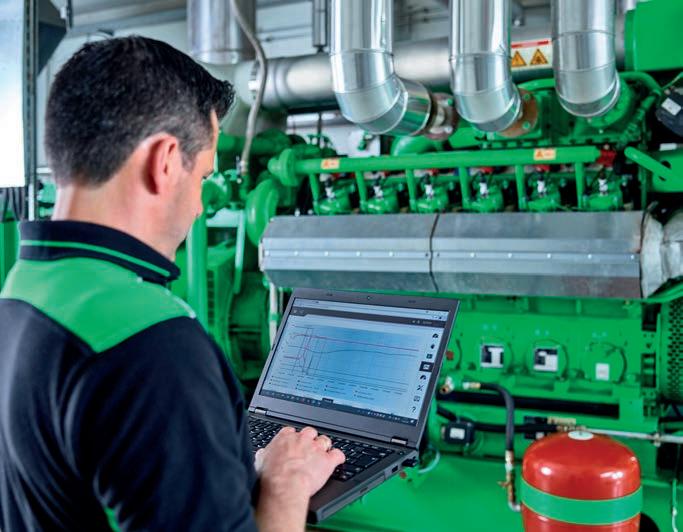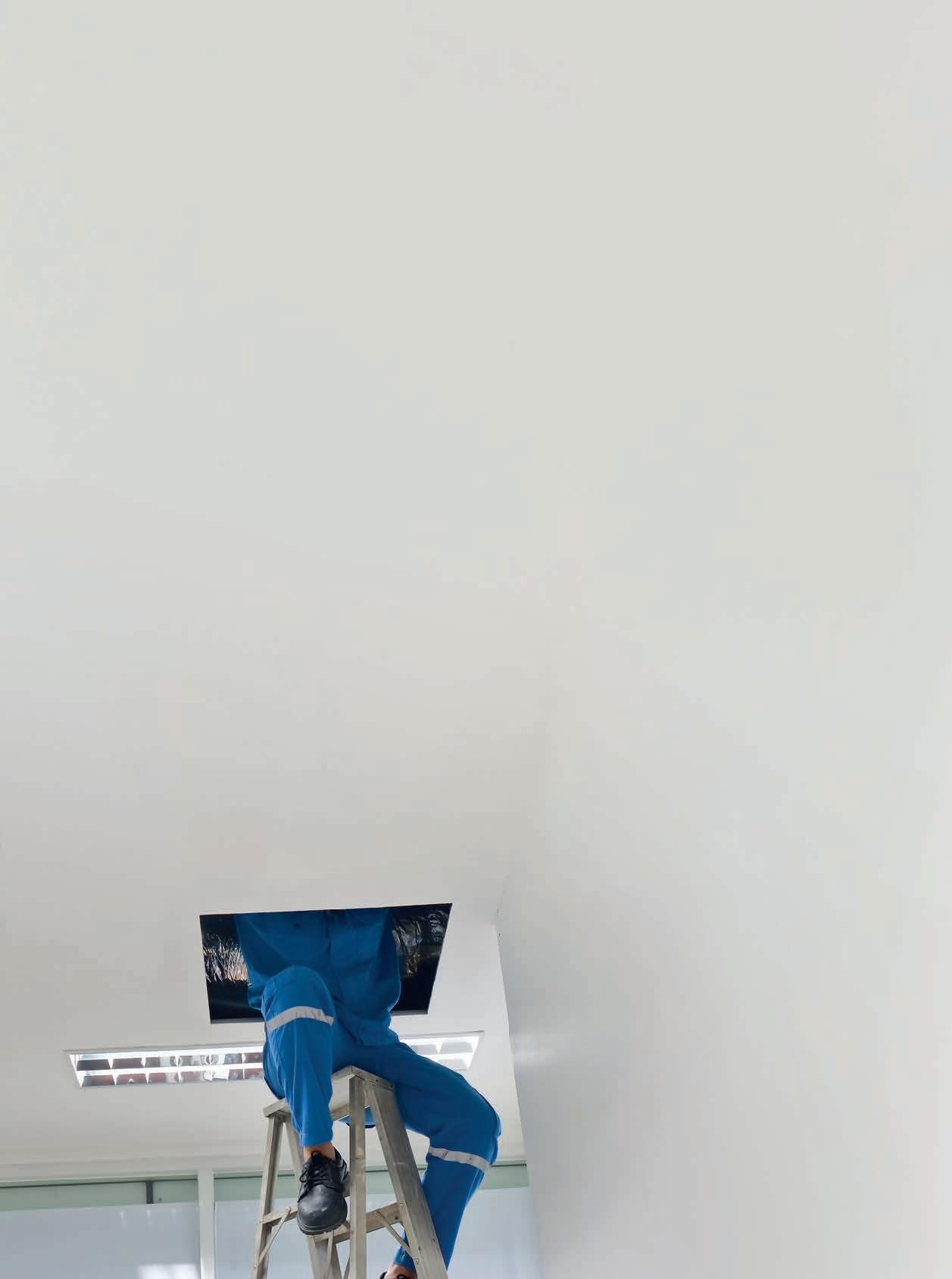
9 minute read
Banish the pharaoh
2Be vigilant A thorough visual check of deliveries is a useful habit to establish among staff on site.
Pharaoh ants are tiny, so are easily missed, but can be spotted when in motion and are visibly different from other ant species.
PEST CONTROL
A tropical species, pharaoh ants can cause great damage if they infest your building, says Natalie Bungay
The pharaoh ant is a tropical species found only in heated buildings in the UK. It is commonly reported as present in bakeries at the side of ovens or near to them, or close to other machinery that lets off heat.
Although these tiny creatures need heat to survive, they can also be found in less obvious sites, such as trailing down the side of a wall close to a warmer part of the building.
Pharaoh ants are believed to spread diseases, so control is required in food preparation premises, but there have also been reports of the species being found in hospitals – and, more worryingly, within sterile surgical equipment.
Reproduction and nests
The pharaoh ant follows a complete metamorphosis (egg>larva>pupa>adult) and, unlike some other ant species, the nest contains several queens, all of which lay eggs.
Nest sizes vary and are dependent on available space, which means they can grow to a
NATALIE BUNGAY is technical manager at British Pest Control Association (BPCA) massive population, with research finding nests with 50,000 workers and 100,000 ants at young stages! The complete cycle from egg to adult takes just six to eight weeks.
Treatment options
Once the extent of an infestation has been identified, the pest professional contracted to carry out the work will begin the treatment.
Care must be taken to ensure that no pockets of infestation are missed, and further surveys and customer liaisons can determine the success of the treatment.
Full control can be achieved in as little as two to three weeks by a trained and competent professional with the right tools.
Three steps to prevent an infestation
1Establish a pest control
maintenance cycle
Agree to a contract with a pest management professional that includes regular surveying for the presence of pharaoh ants. They can be tricky to spot, as nests are often located in voids or cavities.
Although nests can house thousands of workers to provide food for the colony and maintain the nest, only 5-10 per cent of the workers engage in foraging, so those that are visible are usually only a small piece of the picture.
A professional pest controller will have the tools and the specialist knowledge necessary to carry out a thorough survey.
Pharaoh ants tend to be pale, varying from yellowish in colour to more reddish. The adult worker ants are wingless, about 1.5-2mm long, and will live up to 10 months. The queens are a little bigger, at around 4mm long, and slightly darker than the worker ants.
3Avoid DIY products
or methods
In the event of a threat, workers can move pupae and young larvae away from the original colony, establishing a satellite colony in new areas of the structure and creating a more significant infestation. This response is called ‘budding’ and can be triggered by a perceived danger such as someone carrying out DIY pest control, who wrongly decides to spray any trails or the nest.
Budding is a process by which the ants gradually spread throughout buildings or complexes and pharaoh ants also do this deliberately as they set out to start new colonies.
A pest professional will survey and treat the infestation and decide on a bespoke number of follow-up visits to ensure that the colony has been controlled and that no satellite colonies go unnoticed.
To summarise: in the event of an infestation, it is essential to engage an experienced pest management professional with access to specialist products not available to the public.
To find a professional pest controller visit bpca.org.uk/find

into two outputs, electricity and heat. An engine drives an alternator that generates the electricity while producing heat that can then be harvested from the engine jacket water and exhaust gases, and be reused.
As well as facilitating cheaper power generation, CHP systems reduce a site’s sulphur dioxide, carbon dioxide and nitrogen dioxide emissions by at least 20 per cent. Furthermore, when sized on a facility’s heat base load
CHP PRIMER
Today’s tech for tomorrow
Combined heat and power technology can help us on the way to net zero, as Kelly Cole explains in this primer article
The UK and Ireland have committed to reaching net zero carbon emissions by 2050, with the UK pledging to slash emissions by 78 per cent by 2035 – but do we have the technology in place to make this ambition a reality?
With Ofgem-backed trials already under way across Scotland, the roll out of green hydrogen on the UK’s gas networks is on the horizon. However, more development is needed before it is widely adopted – so it’s imperative we turn to the technology currently available to us, such as combined heat and power (CHP), to meet these targets.
According to the UK Government, generating electricity on-site using CHP systems can reach total efficiency above 80 per cent. They can deliver savings of 20-40 per cent on energy bills while reducing primary energy use by up to 30 per cent, compared with modern separate heat and power production technologies. Introducing hydrogen
How CHP works The CHP process involves taking one input, usually natural gas, and turning it rather than the electricity base load, CHP systems can also reduce a site’s carbon footprint and costs compared with traditional energy solutions while improving system resilience and flexibility. The role of green hydrogen in the UK’s gas networks is expected to increase – something that will undoubtedly affect gas-powered CHP systems. In fact, the UK’s first live pilot to introduce zero-carbon hydrogen into gas networks to heat homes and buildings is fully operational at Keele University in Staffordshire. Up to 20 per cent hydrogen was added to the university’s existing gas network,
KELLY COLE supplying power is general to more than 100 manager for homes and 30 electrical power faculty buildings. at energy and transport As promising as expert Finning this might sound from
UK & Ireland an environmental perspective, introducing change is a concern for businesses worried about having to upgrade their systems in line with the evolving energy landscape.
Fortunately, it is now possible to install CHP systems that run on natural gas but are also capable of operating with up to 25 per cent hydrogen with minor modification. Dedicated products can be configured to operate on up to 100 per cent hydrogen for sites with a dedicated hydrogen infrastructure.
Maintaining your CHP
Once a CHP system is installed, operators can maintain performance with regular servicing. For example, if there is inefficient lube, then this can increase resistance on the generator’s cylinder head, gaskets and seals. Ultimately, this leads to increased fuel consumption for a similar heat take-off to a fully efficient system. Issues like this reduce efficiency and increase fuel use and environmental impact.
Regular maintenance ensures CHP systems stay efficient so it is important to check the reciprocating genset and CHP ancillaries for any irregularities, part wear or resistance. Businesses can partner with an experienced CHP supplier and servicing provider to monitor fluid samples for contaminants, check for irregularities and monitor the system’s overall condition – keeping the CHP system operating at peak efficiency for its whole lifespan.
With the increased adoption of renewable energy sources like green hydrogen, businesses need to respond in time. Modern CHP systems can cut energy costs and increase businesses’ energy independence now, while helping the UK to meet its ambitious emissions targets.
FIRE SAFETY
Fire damper management
Five years since the testing of fire dampers at least every 12 months became compulsory, many FMs still don’t have robust testing processes in place, says Gary Nicholls

Although testing at least every 12 months is mandatory in compliance with BS:9999, testing providers estimate that more than half of the UK’s fire dampers have never been tested, let alone regularly tested and maintained.
Before 2017, the frequency of testing depended on the type and construction of the fire damper. However, BS:9999 now applies to all fire dampers – and is a major compliance issue.
What is drop testing?
Fire dampers comprise a set of steel louvres, installed in ventilation systems at the point at which ductwork passes through an internal fire-resistant wall. The ductwork creates an opening in the wall through which smoke and flames can travel, so it is necessary to be able to close the louvre blades should a fire occur, restoring the fire-resistant barrier. The testing process is known as drop testing, as it ensures that the steel louvres will drop into place.
Many FMs are either unaware that their property has fire dampers or have inherited an incomplete list of assets with only sketchy details of where fire dampers may be located.
Locate your fire dampers
The first task is to find fire dampers so that you can establish a robust fire safety process for continuous testing and maintenance.
Construction of the property is often indicative of the presence of fire dampers, especially in a large number of public and commercial buildings. The most practical approach is to call in a specialist fire damper testing provider to locate, identify and create a register of assets for future testing. This should become part of the overall assets register for each property.
If the ductwork is compliant with TR19, there should be enough access points to check the location of fire dampers in ventilation ductwork. If not, it may be necessary to retrofit additional access hatches – something that would need to be done in any case to achieve TR19 compliance for the ventilation ductwork system during cleaning.
Undertake remedial work
Sizeable sites such as hotels, corporate offices, hospitals or residence halls may have hundreds or thousands of fire dampers, so budgeting for testing is essential. This may be a significant new item to add to any budget, especially when bidding for contracts.
Another cost may be incurred for remedial work on the fire dampers themselves, as they may have been incorrectly installed. Drop testing technicians have identified many that were not installed at the point at which the ductwork met the fireresistant wall, so the barrier is not effectively restored, even if the fire damper is working correctly.
Others were installed upside down, so gravity will always prevent the louvres from closing. Others were propped open during the ventilation system commissioning to test air flow volume, so some fire dampers have been found propped open with bottles, cans, blocks of wood and lengths of string that were never removed. It is essential that props are removed and installations are corrected for straightforward testing in the future.
GARY NICHOLLS is managing director of Swift clean Build testing into the budget
As testing is usually invoiced on a per-fire-damper basis, once a complete asset register has been formed it is possible to budget more accurately for testing, allowing a small contingency for any future remedial work. Drop testing should form part of the annual maintenance or fire safety budget, and should be built into a contract bid. The client or property owner may have to be educated as to why this is necessary.
Following the Grenfell Fire and Hackitt review, it has never been more important for your specialist provider to be fully competent and able to help with scheduling ongoing tests, which can be completed outside normal working hours, or in low season for hotels.
Fire dampers undoubtedly help to save lives, so should be a firm fixture in the annual maintenance schedule.










